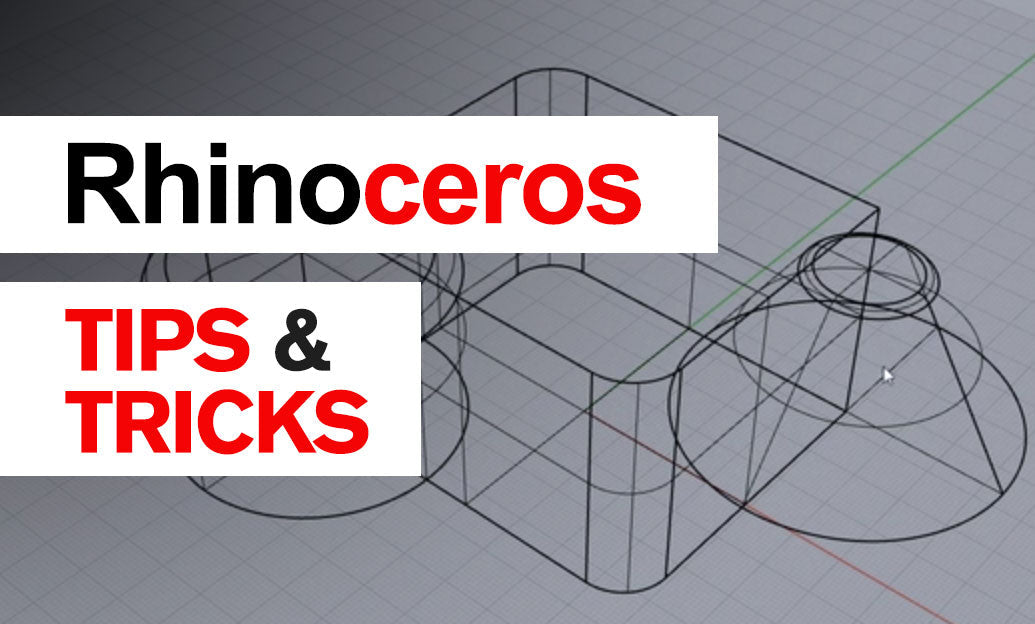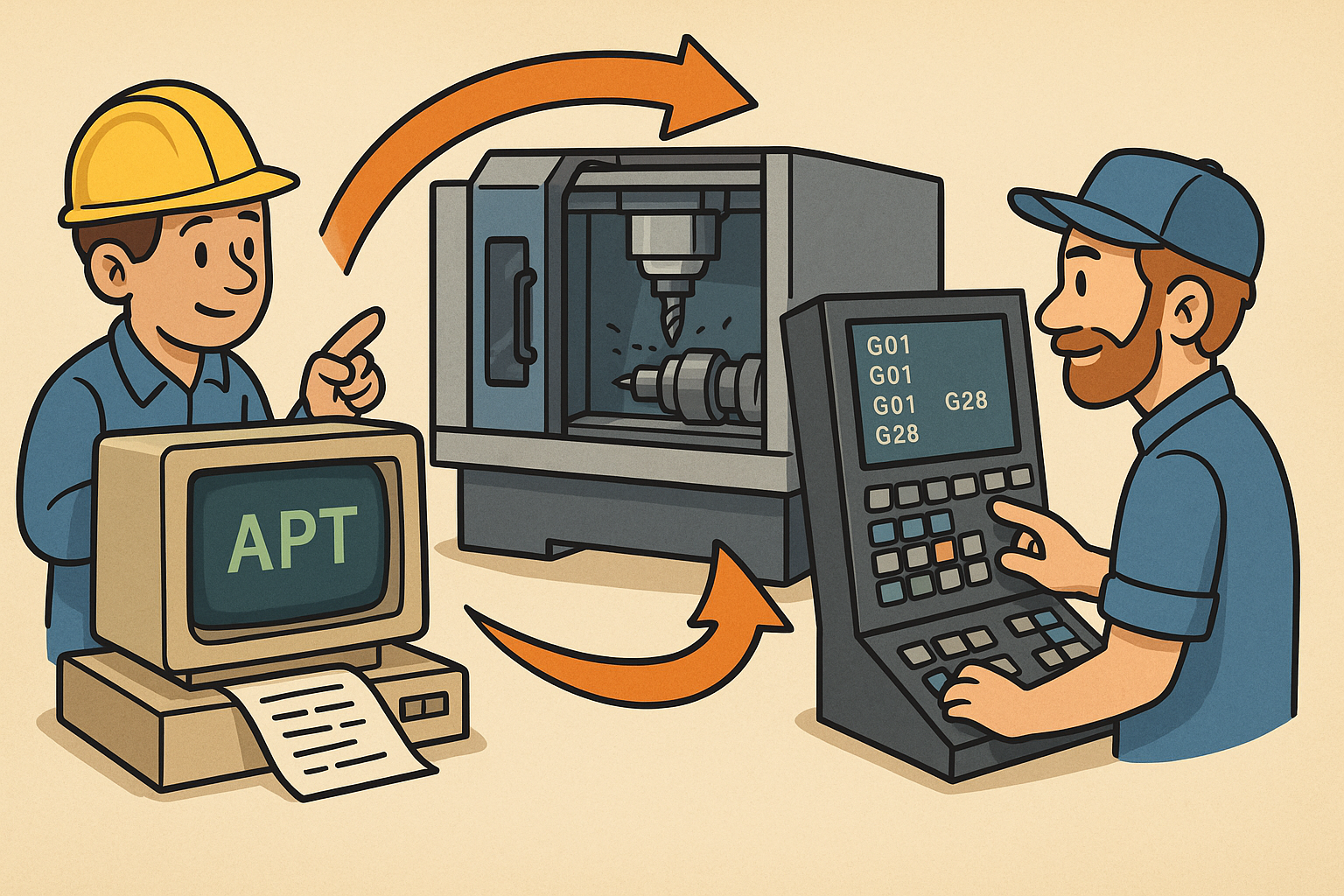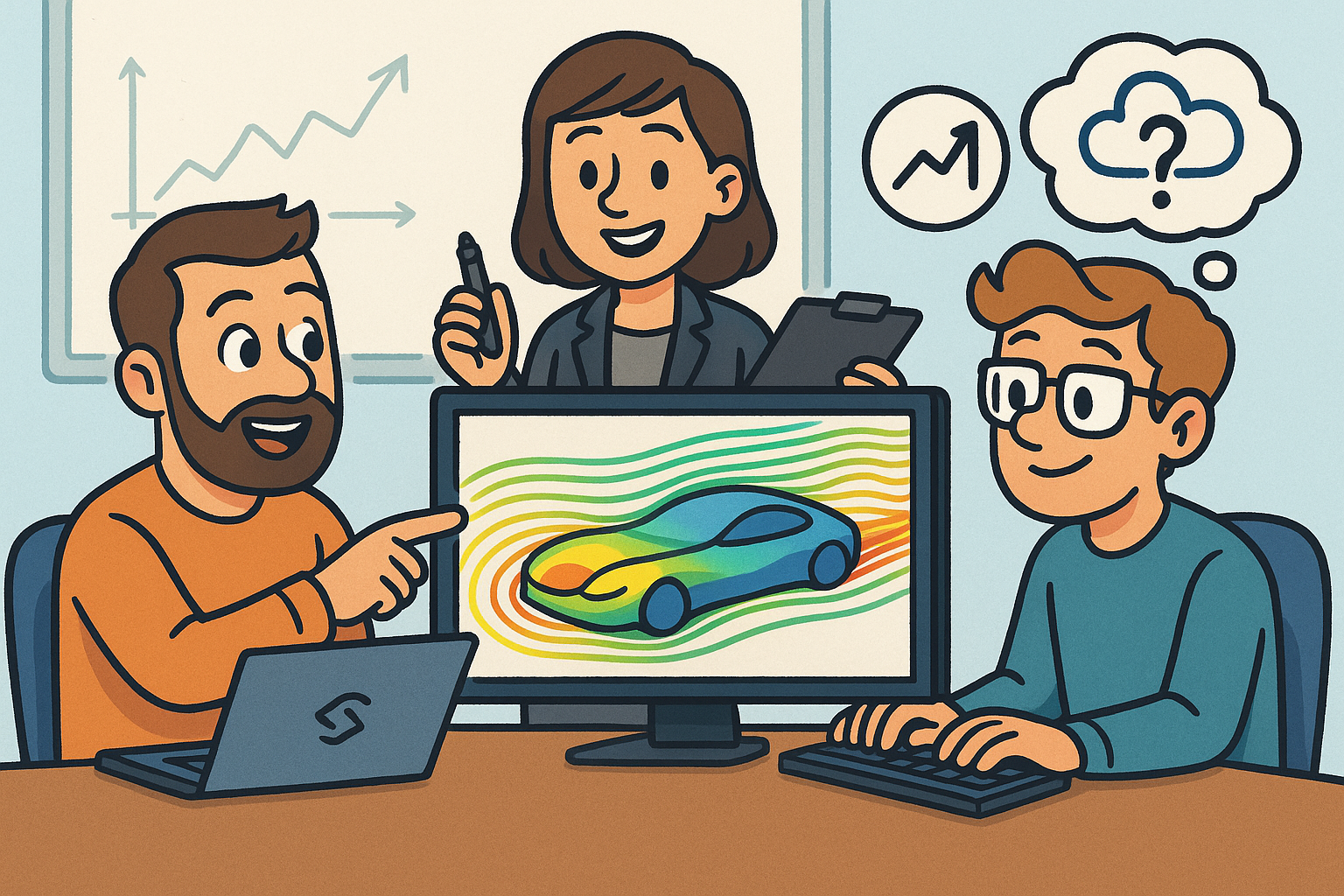Your Cart is Empty
Customer Testimonials
-
"Great customer service. The folks at Novedge were super helpful in navigating a somewhat complicated order including software upgrades and serial numbers in various stages of inactivity. They were friendly and helpful throughout the process.."
Ruben Ruckmark
"Quick & very helpful. We have been using Novedge for years and are very happy with their quick service when we need to make a purchase and excellent support resolving any issues."
Will Woodson
"Scott is the best. He reminds me about subscriptions dates, guides me in the correct direction for updates. He always responds promptly to me. He is literally the reason I continue to work with Novedge and will do so in the future."
Edward Mchugh
"Calvin Lok is “the man”. After my purchase of Sketchup 2021, he called me and provided step-by-step instructions to ease me through difficulties I was having with the setup of my new software."
Mike Borzage
Integrating Advanced Engineering Computation into Modern Design Software
April 27, 2025 11 min read


Defining Advanced Engineering Computation in Design Software
**Engineering computation** has emerged as a critical facet in modern design software, fundamentally altering the way engineers, architects, and product designers approach complex challenges. Historically, computation in engineering was a separate discipline that relied heavily on bespoke software tools and manual post-processing, which often led to fragmented workflows and significant delays in the design process. Early computational methods were isolated from the design models themselves, forcing engineers to toggle between disparate systems to perform analysis, simulation, and optimization. This lack of integration not only heightened the risk of errors but also made it difficult to iterate designs quickly and efficiently. In the current digital era, there has been a significant transformation where computation work is embedded within design tools. This integration has allowed for real-time feedback, iterative improvements, and more precise simulations directly from the design interface. The evolution of these practices is evident in the historical challenges that once plagued traditional engineering computation workflows, such as manual data transfers, inconsistent file formats across different software, and the steep learning curves associated with mastering multiple platforms. With the advent of powerful algorithms and faster computing capabilities, modern integrated design suites now offer engineers the ability to simulate physical phenomena and perform virtual testing within the same environment as they create their models. This shift not only streamlines the design process but also opens up a broader possibility for innovation by reducing redundancy and allowing experts to focus on creative problem solving. Moreover, the influence of **engineering computation** reaches far beyond traditional disciplines, extending its benefits to additive manufacturing, product visualization, and architectural design—fields that once operated in silos but now increasingly rely on a comprehensive digital ecosystem. These remarkable transformations mark a significant milestone in the evolution of design technology, where efficiency, accuracy, and innovation converge to address real-world engineering challenges with unprecedented agility.
The Historical Journey Toward Integrated Platforms in Design Environments
The pursuit of unifying computations with design environments is a story of progressive innovation in design technology. Over the past several decades, engineers have recognized the limitations of isolated computational tools and gradually moved towards systems that incorporate simulation, analysis, and iterative testing into a single interface. This evolution has been driven by the increasing complexity of design projects, which demand not only creative ingenuity but also rigorous validation and optimization at various stages of the development process. Early attempts at integration were met with resistance due to the entrenched workflows and specialized software that companies had come to rely on. In many traditional setups, teams often experienced cumbersome transitions between different systems, which introduced delays and increased the possibility of inconsistencies. The pressing need to streamline these processes fostered a collaborative environment where software developers, engineers, and designers worked closely together to address inefficiencies. The result was the development of **integrated design suites** that successfully bridged the gap between CAD, CAE, and CAM systems, thereby laying the foundation for a more cohesive design process. These unified systems not only enhanced the speed of iteration but also improved product accuracy and reliability by ensuring that every design modification was immediately reflected in simulation outcomes. A significant factor driving this integration has been the rapid advancement in computational power, which has enabled real-time analysis and data processing previously deemed impossible. Additionally, the increasing demand for sustainable and efficient design practices has reinforced the importance of a seamlessly integrated workflow, where the reduction of waste and unnecessary repetition stands as a core benefit. Today, integrated design suites are more than just software tools; they represent a new paradigm in engineering that fuses creative design with robust analytical capability, ushering in an era of heightened collaboration and innovation.
Software Components That Drive Integrated Design Suites
Central to the evolution of modern design environments is the strategic inclusion of a variety of software components capable of merging design, simulation, modeling, and analysis processes. At the heart of **integrated design suites** lies the ability to perform parametric design, a technique that allows for the rapid adjustment of design variables and the consequent re-evaluation of performance metrics. Unlike traditional systems, where iterative design changes meant starting analysis from scratch, these advanced suites offer iterative testing capabilities that ensure every modification is automatically reflected in subsequent simulation runs. Simultaneously, optimization tools within these platforms make it possible to test numerous permutations of design parameters through algorithms specialized in converging on optimal solutions. The integration of these components has redefined engineering workflows by reducing the number of manual interventions required and increasing overall efficiency. Notably, the software ecosystem now often includes a suite of mathematical and simulation libraries that underpin fundamental engineering principles such as finite element analysis (FEA) and computational fluid dynamics (CFD), further enhancing design accuracy. Key features of these advanced tools have led to a shift from reactive to proactive design, where potential issues are identified and mitigated early in the workflow. This performance-oriented approach is further augmented by cross-disciplinary capabilities that permit seamless transitions across various stages of product development—from early-stage conceptual sketches to final, production-ready models. In essence, these software components work in a synchronized fashion to not only accelerate the design process but also to bolster confidence in the final product’s performance, underpinning the modern practice of data-driven design innovation.
Cross-Disciplinary Integration in Modern Computation Platforms
The integration of disparate design disciplines such as CAD, CAE, and CAM within a unified platform represents a watershed moment in the field of engineering computation. This cross-disciplinary integration ensures that design phases, ranging from initial ideation and concept modeling to detailed simulation analysis and manufacturing planning, are executed in a cohesive, streamlined manner, thereby reducing bottlenecks that historically slowed down project timelines. The amalgamation of these traditionally separate domains is enabled by sophisticated algorithms and robust data exchange protocols, which together ensure consistency and accuracy across all stages. One of the most notable aspects of this integration is the ability of modern platforms to initiate a design change in one module and see the effects ripple through the entire system almost instantaneously. This capability is particularly important for dynamic fields like automotive design and aerospace engineering, where even small modifications can have large-scale implications on performance and safety. The benefits of such integration can be summarized as follows:
- Enhanced collaboration across engineering teams with diverse skill sets
- Reduced errors stemming from manual data reconciliation
- Accelerated time-to-market for new products
- Improved product performance through real-time simulations
Cloud-Based and Real-Time Processing in Modern Design Suites
A transformative element in the evolution of **integrated design suites** is the incorporation of cloud-based and real-time processing capabilities. Traditionally, the computational power required for high-fidelity simulations and complex optimizations was confined to local workstations, restricting the scalability and speed of analysis processes. With the advent of cloud-based processing, engineering computation has transcended these boundaries by leveraging vast networks of remote servers that offer immense computational muscle on-demand. This paradigm shift not only enables faster processing times but also supports a more collaborative environment where design and simulation data can be accessed and manipulated concurrently by teams dispersed geographically. Real-time processing further augments these capabilities by providing instantaneous feedback for design modifications. This means that as soon as an engineer makes a change in the design model, the integrated system can perform an immediate simulation or analysis, thereby reducing downtime and accelerating iteration cycles. The benefits of these robust processing techniques include:
- High-speed simulations that cut down design cycle times
- Access to scalable computing resources without heavy local investments
- Enhanced data reliability and centralized data management
Best Practices for Implementing Integrated Design Suites
Implementing an integrated design suite within existing engineering workflows requires a careful strategy that balances the benefits of technological advancements with the realities of legacy system constraints. To ensure that the integration process is smooth, it is essential to adopt best practices that focus on both the technical and cultural aspects of a project. One of the key strategies involves establishing a clear roadmap that outlines the phased adoption of the new system, allowing teams to gradually shift from isolated software tools to a unified platform. This procedure not only alleviates the resistance to change but also provides an opportunity to measure the impact of each phase through key performance indicators (KPIs). Among these KPIs, metrics such as reduced design cycle time, decreased error rates, and enhanced ability to meet production deadlines are particularly important. In doing so, organizations can ensure that the consolidated computation tools yield measurable improvements in quality and efficiency. Additionally, encouraging collaborative feedback sessions among users helps in identifying critical areas where the new system can be fine-tuned to specific application needs. The implementation process should also include comprehensive training modules and support structures to facilitate a smooth transition from old to new methodologies. Emphasizing such initiatives paves the way for a more inclusive environment where every stakeholder understands the advantages of the integrated approach and feels equipped to contribute effectively. This cultural shift is essential for leveraging the full potential of **integrated design suites** that deliver substantial returns in productivity and accuracy by eliminating the silos that traditionally hindered innovation.
Addressing Challenges and Navigating Legacy Systems
Despite the numerous benefits of integrated design suites, there are inherent challenges that organizations must address to fully harness their potential. One of the primary obstacles is the integration of new computational platforms with legacy systems that have been the backbone of engineering workflows for years. These older systems, often marked by proprietary data formats and limited interoperability, can hamper the smooth transition to an integrated environment. The challenge lies not only in bridging the technical gaps between these systems but also in aligning the organizational mindset to embrace the change. Therefore, a crucial aspect of the integration process is investing in middleware and data conversion tools that can act as translators, ensuring that critical information is not lost during migration. Moreover, engineers must be provided with extensive training and support to help them adapt to new workflows, as reluctance to change is often compounded by concerns about productivity loss during the transition period. Another challenge involves ensuring data security and integrity as computation shifts from local systems to cloud-based servers. This calls for robust cybersecurity measures and frequent audits to maintain compliance with industry standards. Additionally, managing user expectations through clear communication about the realistic timelines and benefits of the transition can alleviate potential frustrations. By acknowledging these challenges upfront and adopting a proactive, step-by-step strategy, organizations can mitigate risks and create a smoother pathway toward a unified, efficient design process that reinforces cross-disciplinary collaboration and continuous improvement.
Guidance on Integrating Contemporary Computation Tools
Beyond addressing legacy issues, effective integration of contemporary computation tools into existing engineering workflows demands a broader strategy that encompasses operational adjustments, training, and iterative feedback. Engineers are encouraged to treat the integration process as a dynamic evolution rather than a one-time switch, allowing opportunities for adjustments based on real-world performance data. Essential measures include setting up pilot projects that serve as testing grounds for new functionalities while still operating in parallel with established systems. Such measures ensure that any disruptions are minimized while the new tools are incrementally optimized for everyday use. Furthermore, establishing key performance metrics early in the transition process and continuously monitoring these indicators can help teams fine-tune the new integrated systems over time. Organizations can also benefit from leveraging **integrated design suites** that offer modular configurations, allowing for the gradual replacement or augmentation of specific software components without needing to overhaul the entire workflow. Practitioners should consider these strategic points:
- Deploying phased rollouts that minimize risk
- Ensuring comprehensive training and support at every stage
- Implementing robust feedback mechanisms to capture user input
Summarizing the Impact of Streamlined Computation on Design Innovation
The consolidation of design processes through **integrated design suites** has had a profound impact on the field of engineering. By streamlining the various stages of design, simulation, and analysis, these advanced systems not only facilitate rapid iteration but also establish a framework for enhanced collaboration and precision. The direct incorporation of computation within the design process makes it possible for engineers to detect issues early on and make informed decisions based on real-time data, thereby reducing both risk and rework. This method stands in sharp contrast to traditional segmented workflows that relied on manual data bridging and extensive post-processing. The transformation brought about by these integrated systems is evident in the improved efficiency, minimized errors, and accelerated product cycles that many organizations now enjoy. As innovations in computational power and software capabilities continue to advance, the gap between conceptual design and practical implementation is steadily narrowing. As a result, products are not only delivered faster; they are also engineered more meticulously, resulting in enhanced performance and reliability. This progress is particularly significant in industries where precision and scalability are non-negotiable components of success. The integration of high-speed processing, real-time simulation, and advanced optimization capabilities fundamentally shifts the emphasis towards pre-emptive problem solving—empowering organizations to stay at the forefront of technological innovation and competitive excellence.
Future Directions and Final Thoughts on Integrated Design Innovation
Looking ahead, it is clear that the integration of computational tools with design software is not a passing trend but rather a permanent transformation driven by the relentless pursuit of greater efficiency and accuracy. The continuous evolution in this space suggests that future integrated design suites will likely incorporate emerging technologies such as artificial intelligence, machine learning, and augmented reality to further accelerate the design process. Such innovations promise to revolutionize iterative testing and design optimization by enabling predictive adjustments in real time, based on vast amounts of performance data. As these systems become more sophisticated, the line between designer and machine is likely to blur, with computational algorithms taking on a larger role in decision-making processes. Nevertheless, the human element remains critical to interpreting data and bringing creative insight into every project. Early adopters of these technologies have already reported benefits such as reduced lead times, improved product quality, and enhanced collaboration across geographically dispersed teams. A balanced approach that combines **advanced technology integration** with practical industry applications will be paramount in ensuring that organizations are capable of harnessing these innovations while maintaining operational continuity. Ultimately, the future of design innovation rests in the ability to merge technological advancement with strategic implementation, crafting environments that not only anticipate but also adapt to the emerging challenges of tomorrow. As the realm of engineering computation continues to expand, organizations that proactively invest in integrated design suites will be well positioned to excel in an increasingly competitive market, setting new standards for efficiency, creativity, and precision.
Also in Design News

Rhino 3D Tip: Rhino Section — Precise Cut Profiles for Documentation and Fabrication
January 06, 2026 2 min read
Read More
Design Software History: APT to G‑Code Dialects: The Evolution and Persistence of Vendor‑Specific CNC Post‑Processing
January 06, 2026 11 min read
Read More
Real-time CFD for Design Reviews: Progressive Solvers, GPU Pipelines, and Uncertainty-Aware Collaboration
January 06, 2026 12 min read
Read MoreSubscribe
Sign up to get the latest on sales, new releases and more …


